The word "Cenocracy" is being used to describe an interest in establishing a "New Government". (Ceno= "New" / Cracy= "Government") However, political theory is not enough to establish a better government on behalf of the people. Nor are the traditional Religious and Secular philosophies. They are all too representatively subjective in their self-concerns. For example, a person may advocate change corresponding to their interest in global warming, some economics theory, nuclear armaments, terrorism, health care, pensions, abortion, illegal aliens, Equal Rights for Women, or some other singular issue as the primary concern which an overall government policy should revolve around and dictate all other policies; yet such views do not incorporate an appreciation of one or more other subject areas that needs to be included in an effort to design a more comprehensive governing... long-term strategy... which is not to be confused with adoptions of ideas which settle into traditions, cultural practices, and superstitions. Clearly, we must be more expansive in our considerations. Sociological and theological theories (beliefs) are particularly vacuous (empty) in light of the possibility that they can easily be usurped by some catastrophic or incremental deterioration we are not taking into account for our governing projections.
Similarly— as an extension of this example, a person may believe in global warming but wants to convince others that there is no such thing, because if the truth about global warming is adopted, then their profit margins or their desired life-styles will suffer because government policies will have to be changed accordingly. Their greed knows no bounds, even if the lives of the public must suffer just so they can exceed, if not maintain their opulent life-styles that they interpret as a necessity because they don't want to have to suffer like the majority. Such people wouldn't try so hard to suppress the science if they didn't believe in the science themselves... but wants the public to disbelieve it so as to maintain their wealth ... a wealth that doesn't concern itself with democracy, health care, jobs or anything else important to the average person... unless such issues present them with a potential loss in power, position or pecuniary interests— for which there are numerous historical references which explicitly detail how businessmen fight against the rights of workers whose claims for adequate health care, livable wages, pensions and other needed benefits, represent the Will of the general public. The wealthy are a problem just as they have been in past ages... because no effective solution to their madness has been effected... though such exists. This is not to say that Capitalism is evil, but merely a tool turned into a weapon to exploit anyone and anything that gets in their way. Yet, there is a serious problem when it comes to an understanding of the Global Warming Issue, as illustrated in the following image concerning those readers who came across a particular survey:
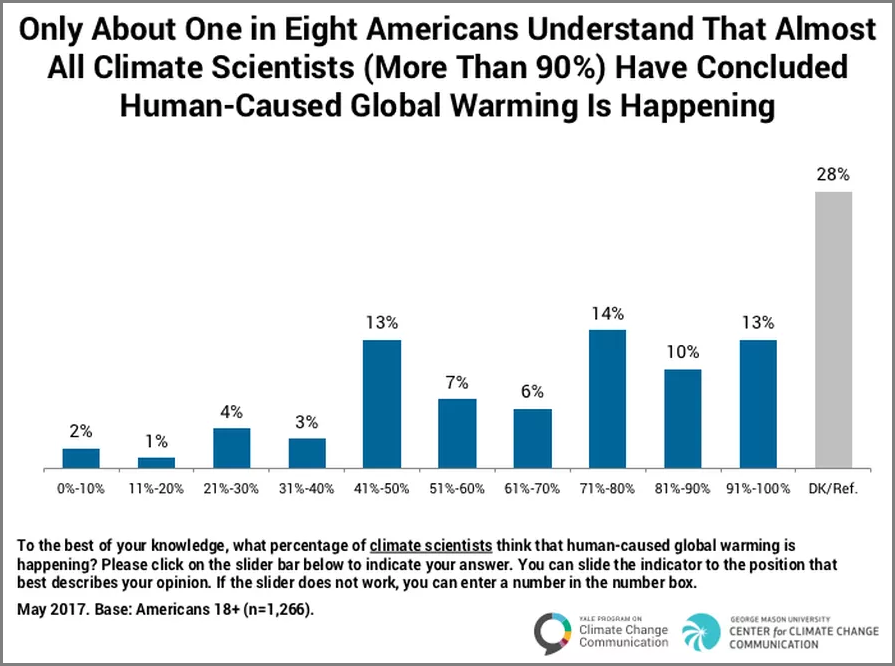
Almost 90% of Americans don't know there's scientific consensus on global warming
Let us state generically that the wealthy in and out of government believe in global warming but do not want the public to believe in it because the acceptance of this would instigate a requirement to develop major governing changes that would affect their profits or position or presumed power of influence.
Only an idiot refutes consciously ascertainable common sensibilities supported by scientific appraisals. If anyone has a better environmental science, a better mathematics, and a better physics; please bring it forward so that all peers may judge the methods and results accordingly whereby the public will not be forced to leave the final interpretations in the hands of those whose opinions are bought and paid for by those who profit the most from faulty politics... which is never the public. It is wiser for us to err on the side of caution than to wholly disbelieve— which creates vulnerabilities we can not recover from. Attempting to alter science into a religion so as to establish a belief system based on hearsay, innuendo, superstitions, fear, insecurity or traditions... is the naive mentality one expects to encounter from a primitive living in an isolated village still practicing a stone tool perception of reality.
Not only can we identify a lack of awareness amongst the general public regarding the issues of global warming, but also the government when it comes to economic considerations. Whereas there is a large consensus of climatologists who speak of concerns about global warming, we also find a large pool of economists that have tried to get their view about concerns regarding the potential of an economic Depression due to faulty government policies.

1,100 economists warn that Trump is repeating one of the biggest mistakes of the Great Depression
Not only does the common man and woman on the street fail to remember history because they are simply ignorant of it in the first place, but such is the same case when it comes to some who become government officials but should never have been permitted to set foot in any government entity.
With respect to sociology and politics, it matters not if you prefer some amalgamated or selective form of Anarchy, Communism, Corporatocracy, Democracy, Monarchy, Philosopher-Kingship, Plutocratic-Aristocracy, Socialism, Theocracy, or any of the other standardized social-government philosophies (esoteric models notwithstanding),... they, in and of themselves, are not enough. Nor are any of the economic theories, since they can be used either as a tool for the people or as a weapon against the public like the many Capitalistic-branded exploitations carried out in the U.S. which are designed to abuse the citizenry under frivolous definitions of privatization, individualism, patriotism, equality, democracy, freedom, justice, fairness, and multiple other practiced hypocrisies.
If one studies Sociology, it is not taught today as the founders of the subject had initially proposed... as a means to help solve social problems. Because it has failed in this respect, in many respects it has become but another branch of philosophy like Political Science. Instead of scientifically studying social circumstances in order to find solutions to problems, today's Socialists act more as pseudo-historians and pseudo-archaeologists attempting to practice some dramatized methodology of investigative journalism as gum-shoe detectives .. if not like a different genre of cultural anthropology more noticeably witnessed by movie producers like Oliver Stone and Steven Spielberg who produce movies such as Ukraine on Fire and The Post, respectively... not to mention Ken Burn's The Civil War chronicle.
 By Oliver Stone |
 By Steven Spielberg |
 By Ken Burns |
When it is well known that history is written by the victors, we necessarily must recognize these producers/directors as some of the victors in the film industry, though there are others no doubt whom we may not know publicly about that have directing talents which could well rival them... if only they had the chance to practice their skills. While these three are part of the prime formal culture, there are others producing works which have created separate sub-cultures because of their particular sociological focus and personal perspectives. And although there is a distinction to be made when comparing the former three examples with those which follow, we must ask whether they are making any headway in correcting the many mistakes of the government-directed society, or creating just another type of equation by inserting other variables? In other words, the main stream producers and directors are clearly interested in awards and other profits, while the latter three (and their genre) have a different orientation... though they are not necessarily adverse to making money and gaining recognition so as to promote their ideas. Thus, let us ask which of the authors are doing the better job of attempting to instigate positive changes in society by altering government and economic policies? No less, let us make a distinction between the work done by the above three and the following three examples, since the notability of the producers and/or directors plays a large part in getting the main stream public's attention regarding social events and issues. Who is doing the better job and why aren't all of them working together to produce a unified idea to produce a better society?
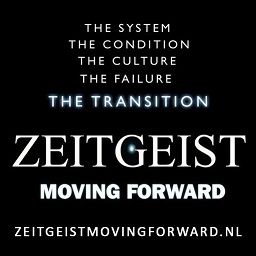 By Peter Joseph |
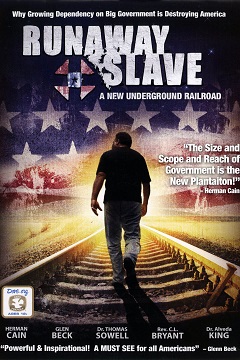
Baptist minister C.L. Bryant |
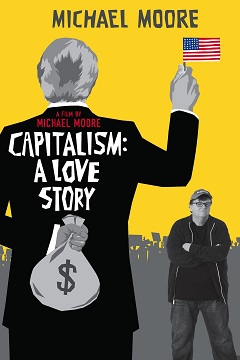 By Michael Moore |
While it is easy to create a movie by "simply" writing a script out of ready-made historical data, it is not so when attempting to create an idea involving a New Government, such as a Cenocracy. This entails not only a greater depth of imaginative creativity, but an understanding that a visionary approach to portraying a never-before established practice is the rule-of-thumb which must be the guidelines by which a script is written. Like writing an original poem, drawing an original architectural design, or creating an original mathematical/physics theory... this is very difficult for many producers and directors. Whereas they have talent, they do not have genius.
In looking at the perspectives of all too many whose sincere interest is in applying political and sociological data for the purpose of making corrections in government strategies which keep humanity in a situation reminiscent of spinning its wheels in a sand pit or mud bog; we very often witness ideologies born of considerations that are either too short in an historical scope, or devoid of information from multiple subject areas. While a person may be quite adept at finding patterns in statistical information or patterns in the "odd" occurrence or some other characteristically accepted and "you-are-expected-to-see" and thus interpret according to given criteria already adopted; eclectic approaches at analysis are not permitted to portray patterns not readily recognized by presumed experts or professors who want you to perceive as they do... that is if you want to pass their course. PhD thinking freshman or juniors can be perceived as a threat... particularly if they gain a following amongst other students who begin to question the relevancy of required course material because it is based on tradition.
In some instances we encounter those who claim they are taking divergent information into consideration; yet upon examination, it is information from a single subject area that has been split into separate research areas. They are so caught up in their respective subject they have lost sight of how many sub-areas of research have been developed into their own discipline... yet belong to the same species
Generally speaking, while students are encouraged and sometimes required to have at least a remedial awareness of multiple subject areas and inter-connect them in standardized ways, students are not necessarily taught at the beginning of their scholastic pursuits to recognize basic cognitive related patterns in the different subject areas... primarily because their instructor doesn't know that such exists. And yet if they did recognize such, they might not see any relational significance because they were taught to take a conservative analytical approach to the study of multiple subjects when they were in school. For example, if a comparison amongst the aforementioned different political/sociological took place, they were applied with the language and images already prevalent within the given subject area such that Anarchy would be seen with the language and imagery characteristically used by its proponents... as would be the case for Communism, Democracy, Libertarianism, Socialism, etc... Trying to widen the perspective of such adherents by using other-than typical analogies might off-handedly be dismissed because there is no previous frame of reference or attempts at such being made by multiple others. Let's present an example, and then move on from there... hoping that the reader has some understanding of environmental science, anthropology, microbiology and is able to conduct a thought experiment in the manner that Einstein did when he visualized his own presence in a given scene and scenario.
Metaphorically, all such ideas can be simplistically (if not artistically) viewed either/or/and as different kinds of:
- Floating (fluidic/drifting) vessels
- Flying (aerobatic/wafting) vessels
- Stationary (static/unmoving) vessels
Vessels which enable some occupants to live an easier life than others... but all of them are human-made survival crafts whose designs are subject to ongoing deteriorations that are taking place, but are being overlooked, except for the traditionally observed personal dimensions associated with human death... and the adopted methods for maintenance fall short of the requirement for sustaining the vessels in top functionality... and this says nothing about the crews whose memberships may exhibit a level of incompetence even the old U.S. television comedic teams of Mack and Myer (for hire), Abbot and Costello, the Three Stooges, as well as the Marx brothers and so many others— would themselves be embarrassed by having any association with such antics. In other words, some people and their selected assistants should never be permitted to over-seer any business, military, social/political or religious position... no matter if the "put in their time" or "play the game" in the accepted and expected manner and have all "the right contacts" to insure placement in systems that are found to be customarily rigged on behalf of a given person or group in hopes of achieving a given purpose.
(Each with their own maintenance requirements, occupant capacity, control systems, resource uses, fuel requirements, stewardship politics, hierarchy deployments, navigational equipment, maps, orientation settings, infrastructure-skeleton, bureaucracy, defense mechanisms, automation, cable/hydraulic assist systems, docking/landing gear, fire suppression, maneuverability, etc...)
 (Simply change the names to represent a given ideology for a given time period. For example, which of these best represents a Communism, Democracy, Dictatorship, Monarchy, or Socialism?) |

Thor Heyerdahl was a Norwegian ethnologist and adventurer who organized and led the famous Kon-Tiki (1947) and Ra (1969-70) transoceanic scientific expeditions. Both expeditions were intended to prove the possibility of ancient transoceanic contacts between distant civilizations and cultures. |
 For all its luxury in seeing to the needs of the Wealthy passengers, a wealth of common sense was lacking which resulted in the needless ruin of many... all because of greed. (Sounds all too familiar like the practice of Capitalism under the control of a falsified democracy.) |
 A (built-for-disposability) billions -of- dollars vessel with various kinds of accouterments for the "champions of democracy". |
Yet these so-called Champions of democracy hold no actual respect nor patriotic fervor for such an ideal because they themselves do not practice a democracy as noted by the lack of a voting system in which leaders are supposed to be elected by the majority and not a rigged system using an Electoral College; because like most majorities, the collective voice of military personnel is undermined by a rigged system using words such as duty, honor, patriotism, god, law or whatever emotionally manipulative control mechanism can be employed to make people deaf, dumb and blind (like religion's "fear of god" tactic)... such that the military's many hypocrisies can be excused by calling them rational... and supporting the "uniformed irrationality" with its embroidered tattoo reward system of having learned how to master the justification of double-standards— by labeling them patriotism established by an enormously expensive and greedy might-is-right rule -of- thumb. The established military philosophy must have an underlying emotional base because its pseudo-intellectual one is formulated on hypocrisy. An underlying and concealed emotionalism allows participants to subvert logic and rationality. For example, some will outright say that the love their country. That they love freedom. That they love peace and justice and democracy. But what they are actually conveying is a learned script like so many call center employees are forced to submit to. What they are actually saying is that they love being told what to do, where to go, what to think an feel... by the dictates of a few who are chosen by way of a system fashioned on a military-styled aristocracy. The following is a list of some military hypocrisies, though the fact that the military is the largest welfare program operated by the government often goes overlooked:

With respect to using various ships (or horses, mules, wagons, trains, etc...)— often followed by monuments, roadside plaques, commemorative stones or sculptures (that someone typically makes money off of)... as vehicles of sociological consequences such as in the case of cramped slave ships all in the name of seeking a profit; let us not forget buildings such as the highly suspicious attacks on the Twin towers and Pentagon of 911, though the historical recurrence of using ships may cause one to recall the sinking of the Lusitania used by the U.S. as a propaganda tool against the Nazis, and the bombing of Pearl Harbor, used as a propaganda tool by the U.S. against the Japanese. No doubt tensions will be stirred against North Korea to validate an attack against it and create more tensions in Asia... with respect to China, which may be followed or preceded by a creation of increased tensions in the Middle East in order to attack Iran, Israel and Palestine... so that the U.S. and others can go about playing some more war games. No doubt justifications will be artificially manufactured just as they were when the government claimed the existence of Weapons of Mass Destruction for Desert storm (that turned out to be a double-dealing dust devil),... even though none of those engaged in the frivolous acts of propaganda were ever found and no one was ever incriminated for making the assertion. They were simply permitted to retire with a full pension. Because this is the standard of Truth and Justice advocated by the American way... at least for the elite who are not being politically set up as a public scapegoat.
All too many disasters are viewed with suspicion and lead to a distrust of government. Whereas the British ship Lusitania might not appear as a favorable propaganda tool by the government, it is if it is noted that it was claimed there were American passengers on board... yet the idea that Britain was using passenger vessels as a means to conduct war activities seldom comes to mind. No less, the Attack on Pearl Harbor is viewed with suspicion because information came out that the preparations for the attack were known and being prepared for because the U.S. President told the head of the Red Cross to stock up provisions in Hawaii. While the sampling here in is small, the general idea that different sociological events can be used as vehicles for creating moments of change is a metaphor that might now be more easily grasped by those readers unfamiliar with such a perspective... even if they may themselves were inclined to imply such without giving an articulation to their self-possessed intimations.
 |
 |
 |
 |
 |
 |
We could also include other types of ships such as space-only ships (or air-spaceships), and various non-space airships such as planes, jets, gliders, helicopters, hovercraft and dirigibles... some of which don't permit the use of parachutes a viable option. And as is often the case prior to a complete disintegration, some level of advancement... at least in one or another direction might be seen... thus causing many to overlook the flaw of the initial design constructed with an underlying faulty philosophy that does not take into account the larger "chain/state-of-being" occurring under conditions headed along a course of annihilation by way of an incremental activity of deterioration.

Described in terms of being a social/political metaphor, King Minos (of the Minotaur and Labyrinth fame) "imprisoned" Daedelus and his son Icarus (in what can be described as a social maze that we of today might refer to as a game with particular social standards); Daedalus constructed wings for himself and his son as a means of escape. Icarus flew too close to the Sun (the "light") that melted the wax which held the feathers in place. |

|
 |

|

|
 |
 |
 Due to restrictions imposed on Germany by the U.S., the highly flammable gas Hydrogen was used instead of Helium. The event was used as a propaganda tool by the U.S. against the Nazis. |
 |
 |
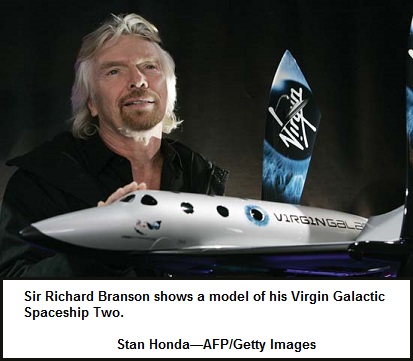 Unfortunately, Branson is ahead of his time and does not have enough support for his ventures which will take a massive influx of money and effort as part of a larger social mindset to make his dream(s) a reality. Analogously, if there had not been a wide-spread interest in motor vehicles, planes, trains, bicycles, etc., none of them would have achieved commercial viability. As such, the public needs to move beyond its idealistic fantasies about saving the Earth, establishing a Heaven or Utopia on Earth and adopt a rationale for pursuing a larger reality beyond the umbilical cord of "Mother Earth"... A cord hung on to by too many businesses, governments and religions... and used as a threatening noose or leash. |
 Time machine used in the 1960 film by George Pal illustrating the story written by H.G. Wells. (George Pal also made the 1953 "War of The Worlds" film... a story also by Wells.) |
And even though some readers may have a little difficulty in visualizing the collation of different interpretations of ideas as a "vehicle of thought" which can propel us towards different types of perspectives of investigation; on the subject of time set into the "vehicle" of the Universe, varying scenarios relate to different views concerning deterioration and continuance based on the assumption proffered by some that progress is commensurate with varying definitions of the word "size" in relation to quantity or bulk (such as the size of a Nations GNP {Gross National Product}, the size of a personal bank account, the size of one's muscles or sexual appendage, how many houses one owns, how many employees one has, how many people are thought to believe in a given religion, how many ships, guns or bombs or the size of one's military, how much wealth can be forced out of the public to make it suffer before they stampede with a Revolution, how many temples one can build in different cities, how many goals one achieves, how many college degrees one has, how fast can one drive, how many pets one owns, how much alcohol can be consumed, how many traffic tickets can be written in a day, week, month or year, how many years one works at a single job, how many terms in public office one can "own", how many politicians can be bought off and for how much, how much money can be swindled out of the public without getting caught and having to give the S.E.C. a cut of the ill-gotten gains, how many idiots can a system get to run for president at a single time, how easy is it to undermine the collective voice of the public, how much can be charged for medicine and medical treatment so long as public officials get a cut of the gains, how many people can be duped by slogans such as "Make America Great", "We are stronger together", or how verbally nasty against one's opponents one can get away with in public, etc...):
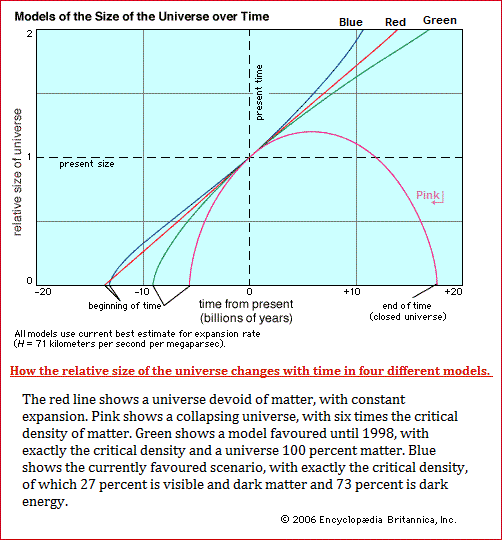
By using ideas which increase the size of the Universe, humanity proposes to increase it options for survival and potential growth... like a stock market analyst speculating about the future just as ancient prognosticators engaged in as a government-aligned service that they could be paid for... so long as they provided perceptions with a positive inclination. It is a speculative philosophy applied socialistically that uses imaginative physics models for different interpretations. To provide a positive outlook keeps one from being labeled a placard wearing dooms-day sayer preaching some end of the world biblical scenario.
While some craft designs become particularly elaborate or complex, with the level of opulence no guarantee of a sustainable resiliency... so much so that their basic— underlying skeletal structures (Constitutions, Bill of Rights, etc...) become overlooked as a determining factor in overall capability (pond, river, lake, sea/ocean-worthiness); social and cultural customs can create further distortions... such as creating densities of activities (education, law enforcement, sub-cultural, welfare, military organizations, sports clubs, music genres, religious fanaticism, drug cultures, gangs, etc...) that make its occupants oblivious to incremental deteriorations. For example, if we visualize a large raft or boat on an ocean with most people congregating in the center or just off-center in some respective group; those who occupy the outer edges... the "fringes of society", may be the first ones who recognize the deteriorations but any effort on their part to disclose their perceptions to those who congregate in some "inner social sanctum" of overall social leadership may disregard their views because they speak in a different language, a different vernacular than the adopted "political correctness" being observed by those who are obsessed with the standardized perspectives shared amongst their like-minded group members.
Indeed, if those on the "fringes" of society are only accustomed to using references taken out of the bible or some other venue (cook books, horse racing form, automotive repair manual, etc...) that is not part of the intellectual repertoire of most social groups; the words and manner in which they attempt to convey their "fringe" observations may give the appearance of eccentricity, craziness, or other socially disparate elocution that must be off-handedly dismissed because it is intelligible by those whose minds are not equipped to manifest a multi-metaphor means of translation... like a person who can understand and translate all the languages occurring in a tower of Babel. For example, a person "on the fringes of society" may be sensitively aware of some social deterioration headed inward but are stuck in a mindset with a vocabulary that has a limited means of explaining themselves... like a person who may be well versed and experienced in some arts and crafts occupation trying to describe quantum mechanics. It's not that they don't understand quantum mechanics, it's just that their accustomed to language and repertoire of illustrative descriptiveness is limited by their experiences... and those who do understand quantum mechanics in a conventional manner may also have a limited means of comprehending alternative ways in which their subject can be described. Because so many in different subjects adopt a particular type of jargon and behavioral means of articulating a similarity of ideas; they frequently have difficulty in seeing their subject being interpreted and thought about from different venues. They consider that their adopted language shared by like-minded colleagues is the "true" language of their craft and anyone who does not speak in their tongue doesn't understand their preferred subject matter.
The membership of most groups have only a marginal interest in science or in keeping tabs on either the vessel to which they occupy or the medium in which the vessel is suspended. If we use the metaphor of a car, train or plane, the overall illustration is not changed... just the context of perception in order to assist different people with a means of visualizing from their learned vantage point. If you are a person who not only belongs to an inner group but takes time to venture outside it like in the story of the Prince and the Pauper, you become experienced to different information from varying perspectives, but may not necessarily be receptive to the same type of interpretation based on whatever initial inclinations you have become predisposed to. In other words, though you will see and be receptive to an observation of deterioration, you will diffuse it in accord with the standards of language expediency consistent with your group, so as to make some advantage of the information for your particular individual uses and not as a means to assist others. Simply put, you will be selfish. Whereas you may like lots of different information from different subjects and perspectives, your interest is to further your own individual means and not the whole of the public. You don't care if the vessel deteriorates, so long as you are enabled to increase your own wealth and well-being... even if it is at the expense of everyone else.
This "New Government" interest stems from the adoption of a new philosophy concerning the eventual demise of the planet, planetary system and galaxy within an expanding Universe. Whereas present and older governments relied on there own philosophically established interpretations involving the Universe and humanity's role in it coupled to a relationship defined by religious precepts, we have begun ours with a different perspective that we must develop governing policies in accord with. As such, you can not view our ideas constrained by the old interpretations established by religious doctrine. To do so would be like the application of logic used by Neanderthals (who are said to be extinct), to the lifestyle of H. sapiens from whom modern humans is said to have descended from. While the two look similar, and may have shared similar activities according to the endowed similarities of physiology, there was a difference... even though some of us have ventured the opinion the Neanderthal line had not completely vanished... having become preserved by establishing a genetic dimension that appears to crop up now and again in different families... like a symbiotic organism coming out of a cacoon to see whether prevailing social/environmental conditions will allow it to prosper.
If mental and emotional characteristics of an early human were born into someone of the present... irrespective of onto-genetic and phylogenetic considerations, such characteristics would no doubt be interpreted and defined by present day standards attributed to humans. In as much as some people may view themselves more suitable for a distant past or future age, not many would consider themselves as exhibiting characteristics of some early hominid... because we of the present denigrate them as being inferior. But if early humans could have been brought up in a present day context with all the advantages of health, education and welfare that we of today have, their presumed primivity and inferiority may not be so easily recognized... unless we are specifically monitoring intellectual acuity. Since most present day schools are not instructive in guiding and encouraging hands-on manufacturing, mechanical and artistic aptitudes... based on an economic standards of exploiting the larger public through various manipulations of financial expediencies; those whose intellectual prowess is not adept at mimicking standardized academic requirements are looked upon as being intellectually inferior... but not necessarily exhibit some early hominid whose values are not necessarily recognized because present day society is too single-minded... suggesting it is exhibiting a quality that is detrimental to the species because it is too arrogantly specific— when history has shown that it is the generalist that makes the best survivalist under incrementally changing conditions... which in humanity's case is a change along an environmental trek of deterioration leading to the demise of all species.
 |
If you were to refer to these two as "people" or "persons" or "individuals" and place them into suits, beach attire, jogging clothes, etc., many readers would think of them as being "normal", without even having tried to talk to them. And even if they could speak your language (French, German, Swedish, Swahili, English, Chinese, Russian, Spanish, Hungarian, etc...), their usage of the phrase "Family Values" would not necessarily reflect the same values you think are most important... though many people have not tried to itemize what is meant by the expression. Likewise if one could communicate with them about their views on science, religion, politics, etc., however they might conceive of such from their perspective. In short, just because someone claims themselves to be a Christian, Buddhist, Islamist, Anarchist, Libertarian, Democrat, Communist, Socialist, or even dog lover... does not mean they share the same values as you do; because their so-called "core values" is based on a superficiality and/or something distinctly different than what you think the core values of a given belief are or should be.
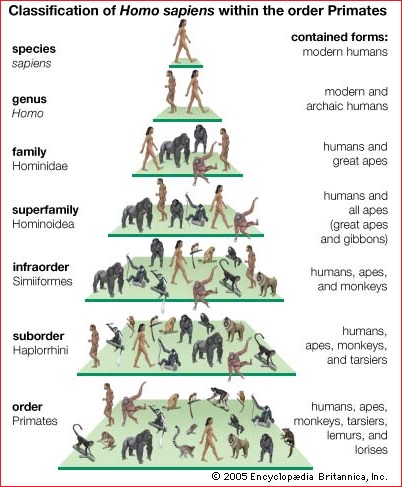
In between the two figures above can be placed the image of a predator whose is able to camouflage themselves amongst one or another group in order to carry out nefarious deeds either for themselves, for another or simply to interfere with the efforts of another. It is a spot reserved for those predators who are sometimes caught, or otherwise become adept at hiding behind a facade of legality or scape-goating, or hide in plain sight... by exhibiting that which others may cover up because they provide a means by which they too can acquire dominant positions and/or resources... unless their interest is directed towards preventing another to gain an enhanced legitimacy that they themselves can never have. And yet, beyond these three is a spot to be reserved for those who have, will, or are transitioning into the next stage of evolution... but is sometimes misinterpreted by those who seek to define themselves and their like-minded confederates as a minority deserving of a status such as being described as an unrecognized ethnic group based on an unconventional social orientation or life-style. Such orientations want to perceive themselves and be perceived by others as an evolved form of human to counter-balance feelings of inferiority as an expressed over-compensation. While they may not be predatorily criminal, they seek to establish themselves as a turning point in hominid evolution towards some greater end, though they in fact represent a dead end... like so many celibate religious order practices convened by way of their own established rituals and obsessions... like those of the LGBTQ community of colonies... now having been defined in accord with their own described self-analysis symbolically projected as a sort of self-diagnosis and described as colonies of L.ost G.irls and B.oys T.otemic Q.uorums... regardless if numerous other letters are employed as part of their embodied self-deceptions of ego-rendered supplementation. In other words, the overall name they describe to their various colonies of communities is a publicly displayed attempt at self-diagnois for a condition... a disposition they come to question themselves about because its presents them with a dilemma of that which is rational and irrational adopted as a rationale... but a complete objectivity is lost due to the nature of their socialized subjectivity which erroneously attempts to presume an increased membership despite a commensurate increase in overall human population density; as if to buttress their desired presumptions of colony expansion wrought by an imperialism of intellectualization used as a defense mechanism akin to some primitive talisman.
If you had an opportunity to examine a person's interest in a given topic, you might well find that it was established by way of a haphazard or incomplete awareness of information; and is thus a result which can be altered if the stepping stones to their present assumptions were provided a better footing. But having incomplete information is the common standard for everyone since we are not privy to information which will arise decades ahead, much less centuries into the future. Whereas most of us may not be up to date on all the current information available to us... though most ideas are not published and many are behind "pay walls" (in journals whose costs are prohibitive for many researchers), or occurring in untranslated sources in different countries. Such alterations in political perspectives have occurred by a change in a person's religious or scientific understanding. Indeed, history has recorded the extent to which both politics and religion have tried to suppress discoveries in science which may arise simply by a reinterpretation of already existing information. No doubt there will be those who will attempt to refute our perspective because an adoption thereof will result in numerous and wide-spread changes in politics and culture. And like so many beliefs having been established in science and religion, we do not yet have a definitive answer for all variables, but they are being worked on. For example, we do not know exactly the process of how DNA, RNA and Proteins arose. Also, we do not have definitive proof how the Moon originated. Additionally, we do not know if humanity is the only sentient being in the Universe. While there are other things we do not know, these examples gives an indication that we will be the first to admit that we do not have all the answers for everything.
We believe that without a better philosophy of interpreting our present understanding of life's processes under the conditions presented to us on Earth; mistakes in politics, religion, science, mathematics and philosophy will continue. In short, we need to make a reassessment and alter our institutions of beliefs accordingly. We believe there are many people who recognize the need for change and that some are perceptive enough to realize there are changes underway, but that they refer to them in the manner and context which they are most familiar, such as the person who walks about carrying a placard describing the End of the world or the End of humanity... and that the only way to salvation is through a religion-defined sanctuary. Their usage of their own words can be viewed as an interpretation of subtleties conveyed with metaphor. In other words, the words "end" and "near" need to be explicitly defined in scientific terms which will no doubt be involved in any religious context that might occur. In other words, if you ask a religious person to place their perspective into a scientific venue they can not, just as it is difficult for someone whose perspective is predominantly scientific, have difficulty in translating their view into a different vantage point. When science is applied to religion or vice versa, alterations in the "core" belief can occur... but this does not mean they do. If vestigial elements of the Neanderthal lineage are permitted to gain a large footing (as some think has occurred with the advent of Trump), they may well seek to supplant all other extent representations of H. Sapiens-Sapiens by forcing them to share in their crude world-view. Hence, it is not a battle amongst different political beliefs taking place, but that of two (or more) variations of Humans... like a Neanderthal disposition attempting to regain dominance over a Cro-magnon disposition.
For example, the well-known historical event (occurring over many years) in which the religious idea that the Sun revolved around the Earth as held by many religious adherents, was found to be false; thus interpreted by such adherents as a threat to their belief in that if one idea can be found to be wrong, so can others. The same goes for the current practice of American, British, Chinese, French, Russian, etc... brands of Democracy, as well as the purported Democracy being championed as a "core" mission belief of the military. However, let us step back a moment and begin by presenting a reinterpretation of humanity's beginning, present and end:
At present, we understand that the rotation of the Earth is slowing down... (That it is deteriorating and this is affecting all life.) Hence, the rotation of the Earth was much faster than it is today, during the genesis of life's pristine building blocks. In contrast to today's rate of spin (at the equator) of about 1,000 miles per hour, the rate of spin several billion years ago has been variably calculated to have been in the range of 3,000 or more miles per hour. In other words, the early Earth was like a type of spinning centrifuge (in which test tubes are placed to separate different components). As the rate of rotation slowed and oxygen levels increased due to increases in blue and green algae, different life forms arose as the ozone of the planet increased; thereby reducing the harmful effects of the Sun and providing for a relatively stable atmosphere. With respect to the emergence of humanity, this event occurred when the rate of the Earth's rotation had established a 23 hours per day sequence.
The Chart below provides examples of (approximation) when different hominid species appeared and what the length of the day was:
| Hominid Species Type... | Approx. fossil age | # of Days per year |
Hours per day |
| Homo sapiens sapiens- | 120,000 to present day | 365.2422 | 23.9345 |
|
Homo sapiens neanderthalensis- Homo erectus- Homo heidelbergensis- Homo antecessor- Homo georgicus- Homo ergaster- Australopithecus robustus- Australopithecus boisei- Homo habilis- Australopithecus aethiopicus- Australopithecus garhi- Australopithecus africanus- Kenyanthropus platyops- Australopithecus afarensis- Australopithecus anamensis- Ardipithecus ramidus- Orrorin tugenensis- Sahelanthropus tchadensis- |
30,000 to 230,000 years 300,000 to 1.8 million 500,000 years ago 780,000 years ago 1.8 million 1.2 to 1.9 million 1.5 to 2 million 1.1 to 2.1 million 1.5 to 2.4 million 2.3 to 2.6 million 2 to 3 million 2 to 3 million 3.5 million 3.0 to 3.9 million 3.9 to 4.2 million 4.4 to 5.8 million 6 million years ago 6 to 7 million years ago |
366.94 367.46 368.94 371.01 378.57 379.31 380.05 380.79 380.01 384.49 387.46 387.46 391.16 394.12 396.34 408.19 409.67 417.08 |
23.929 23.928 23.924 23.918 23.898 23.895 23.893 23.891 23.885 23.881 23.873 23.873 23.863 23.855 23.849 23.816 23.812 23.792 |
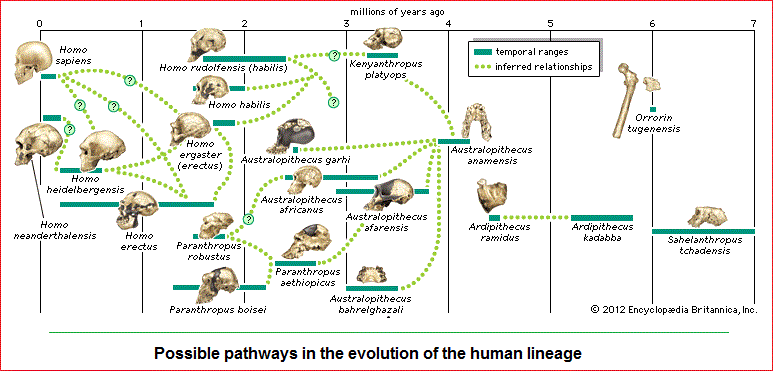 | |
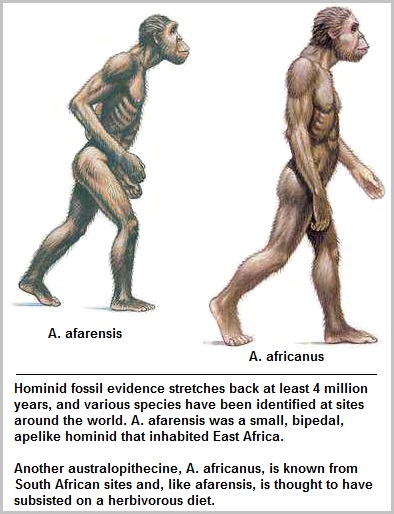 |
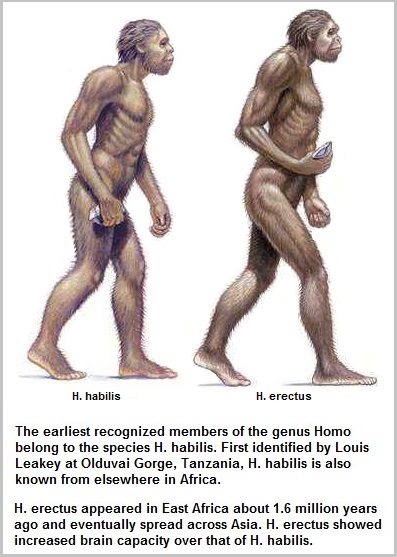 |
Note: the difference between the number of days per year found in the above Hominid species list and the Geological Era list below is due to using different values for calculation, but the intent of demonstrating that humanity evolved during a time when the length of an Earth day was in its 23rd hour is still relevant to the overall discussion. In fact, this also applies to all large complex forms of life. However, it is necessary that rotation rates calculated over-time with respect to defining the presence of an incremental decay and its affects on human development; are not set into the context of geological time. In other words, to argue that changes in the environment (the Sun is burning out, the Earth's rotation is slowing, the Moon is receding)— are taking place over a long expanse of time and are thus of little concern to us... overlooks the fact that the span of human life can not be equated with the same type of geologic time scale. The human span of life, with all the variables of its biological processes established in a very limited time period, must be viewed on this scale.
For example, for the sake of discussion, let us (very generously) say that human life from the earliest formation of its ancestry, began 12 million years ago (labeled the negative area) and that present day modern humans are at the "zero" point of a scale that has yet to begun its "positive" evolutionary development that may or may not last as long (or short)... even if there are some people who think they are already exhibiting beginning remnants thereof because they perceive and process information differently... though others may either think to describe them as a genius, strange, weird or even crazy... (and the present writer is exempt due to a claim of creative licensure). If we assume that the "plus" (+) side will have an identical length of time in which to develop before humanity becomes extinct because it can not adapt to the resulting change in the rate of the Earth's rotation (coupled with changes in the irradiation of the Sun and further loss of the Moon's affects on tides); this span of time is that which must be used to form any calculation.

| Geologic Era | Time of occurrence | # of Days per year |
Hours per day |
| End of Cretaceous Era- "Jurassic Park" Era- Permo-Triassic Era- Late Permian |
* 65 million years ago 180 million years ago 245 million years ago 250 million years ago |
371 days 381 days 386 days 386+ days |
23.68 23.27 23.06 23.02 |
| 90% of marine life and 70% of land species vanished about 250 million years ago. Is it coincidental that the "vanishing act" occurred when the rate of the Earth's rotation was at or near a 23 hour period? Are all rotations rate changes accompanied by "punctuated" events in either/or biological or geological changes? (Even a stark absence would be a "punctuation" mark to be referenced.) | |||
| Middle Devonian Era- Early Ordovician Era- |
370 million years ago 500 million years ago |
398 days 412 days |
22.56 21.97 |
|
Cambrian Explosion era...
was it due to a change in the Earth's rotation rate? This is the era in which a multiplicity of life forms seem to sprout out of nowhere, without evidence of having predecessors. Some think (a) God went "POOF," "SHAZAM," or "ABRACADABRA" and others consider the possibility of an extraterrestrial intervention in the sense of an alien or comet/asteroid. It is an unexplained circumstance that is said to have given Darwin some trouble in his considerations of Evolution. We thus have three perspectives: (1) A God intervention. (2) An Alien/extraterrestrial intervention. (3) And various alternatives. |
|||
|
Earliest Cambrian Era- --- --- Late Precambrian Era- ---- |
600 million years ago 700 million years ago 800 million years ago 900 million years ago 1 billion years ago |
424 days 434 days 444 days 454 days 464 days |
21.47 21.09 20.68 20.28 19.87 |
| Crude oil is from plant life up to 3 billion years ago, but mostly from 100 to 600 million years ago. | |||
| Primordial Soup Era- (chemical recipe of life established) |
3½ to 5½ billion years ago | 1,095.7 | 8.19 |
*65 million years ago is said to be the approximate time when the Dinosaur killing meteor slammed into the Earth at Yucatan, Mexico. Did it also alter the Earth's rotation rate?
Source: The Earth's Slowing Rotation Rate page 1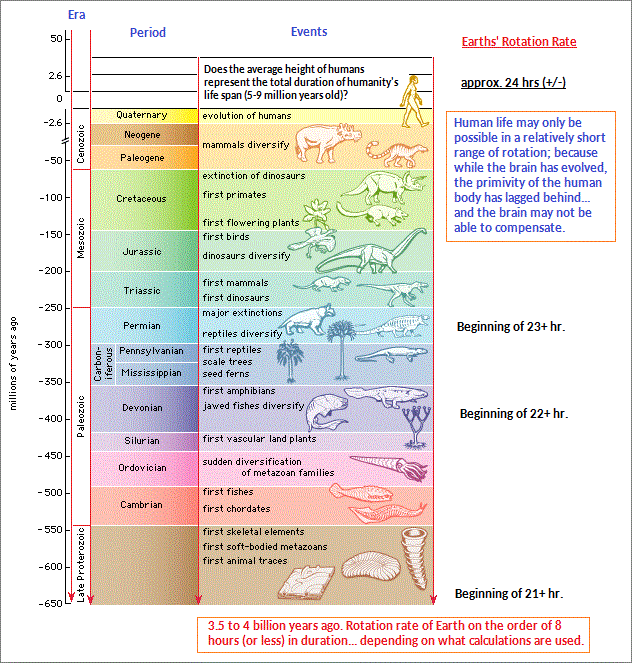
All told, enough people believe in varying ideas containing elements of evolution... that the results of such beliefs have an effect on the core values of religion, mathematics, politics and science. Similarly, those who believe or disbelieve in global warming are no doubt affected by the prevailing philosophical arguments even if they are established on a faulty understanding of the science(s) involved. The same goes for if a person believes or disbelieves in astrology, ghosts, demons, luck, love, karma, ouija boards, etc... While small groups of any one belief may occur in different social settings, they do not necessarily affect the over-all functioning of society in its governing policies or economy. The case would be different if the entire population of humanity awoke tomorrow morning believing insects should be worshipped as gods and that it was the duty of humans to ensure they got everything they needed to prosper... including sacrificing their lives for them.
With respect to the current political episode being played out in the U.S., what we see is what happens when a particular type of former (pre-industrial) human mentality is permitted to gain ascendancy... as if Neanderthals were permitted to wrest the social controls away from a dominant Cro-magnon group because elections systems the world-over are designed to hold progress in check, and let it gain a little bit of freedom over a long stretch of time, like a dog on a leash... but never let's it run free and prefers to take one or more steps in reverse. Because political systems throughout the world permit the occasion of different kinds of hominid disposition to gain business, government and religious control during different times, both forward and backward moves require force. Even when a Constitution is established by standards which appear to represent the best possible perspective, another group of "human-types" (those who exhibit a different orientation than that customarily practiced), can come in and alter the Constitution and Bill of Rights. While this is not bad nor wrong if the majority agree with it, because they must have laws consistent with their mentality; it is bad or wrong in the sense that on the one hand it may be a reversal of presently adopted social and economic standards being relied on by many, or it can represent a developmental change that can not be easily adopted to. While there exist "enlightened" forms of socialization (business, government, religious policies) that can be applied, the problem is that all segments of society are not necessarily "configured" with the appropriate physical, emotional and mental ability to take best advantage of them... and instead may be subjected to stress because they will be required to function at or near their capacity to perform. While the overall policies may be representative of an enhanced operational level for humanity, most humans will be unable to sustain the requirements. It would be like asking someone from pre-history to live in a present day setting, or a person of the present to adopt the standards of a primitive past... for the rest of their lives... as if having gotten stuck in a given time period because their time machine broke down and there were no repair parts readily available.
Like venturing into a village of Neanderthals, H. habilis, H. erectus, A. afarensis or A. africanus; Americans and other peoples of the world are being subjected to an American government being run by those with an antiquated mentality who honestly believe their perspective is the correct one. Unless Obama or anyone else is willing to use force to change the situation, it remain in its current state of diminishing returns for most people. While a few will prosper, most will continue to suffer at the hands of those in various leadership positions who do not have the intellectual acumen necessary for not only advancing the nation, but acting as a role model for the benefit for all of humanity.
Despite the clothes worn, slogans used, resources hoarded, and everyday mimicked expressions, the American people and the rest of the world are confronted by a Washington D.C. village controlled by those with an anachronistic mentality better suited for a distant past... along with which exists about 30% of the American Voting public... as well as those who did not vote but agree with Trump... though they might well come to be disgusted by him if they had to spend any appreciable time in his narcissistic company.
Needless to say, it is very difficult to have a government that tries to provide the necessary social atmosphere in which all types of hominid mentality can strive. No system of government permits it... they can only promote conditions which establish reasons and excuses for people to adopt an attitude for accepting diversity... except that this then becomes the standard by which progress is measured. Whereas all forms of government employ some philosophical measure of conformity, none of the conformities allow for ascendency that all groups must comply with... since not all groups have an inherent capacity to do such. While Trump and his followers believe they are on a path of an ascendancy defined as "Make America Great again", this assumes America was at one time or another in a position of greatness (other than as a mere definition used to describe a particular behavior such as war activity). As is more often the case for those seeking to use the word "great" to attach to themselves, what we find in an over-valuation of something used as a compensation to conceal some failing or frailty... and is thus, in other words, an illusion... like the present so-called practice of democracy.
However, in this essay directed towards advancing a different philosophy so as to establish a better form of government, we need to resume the initial intent of describing the need for understanding that better decisions for the future can only be apprehended if we surmise the effects of the past in their ongoing present state... which is an incremental deterioration that all life forms are incrementally adapting to and thus establishing belief systems which afford us the best formula of relative equilibrium. In other words, as more deterioration takes place, there is the need for readjusting our beliefs... which clearly show themselves to be rationalizations.
Let us describe some of these deteriorations which no doubt have an incremental effect on circadian rhythms:
- The Universe is expanding... and thus along with it the galaxies.
- The Sun's energy is burning out and the Sun is said to be on a course for expansion (and perhaps engulfing the innermost three planets).
- The Earth's rotation is slowing (affecting the geomagnetic field and the dark/light solar irradiation effects).
- The Moon is receding (affecting tides).
These deteriorations have nothing to do with human behavior... but human behavior is affected by them. And while humanity can cause global environmental changes and thus can affect rates of slowing or increasing conditions of pollution, humanity's behavior is a supplemental factor of deterioration. While humanity can slow the process of deterioration down caused by human behavior, there actually is no way for humanity to stop the overall cosmologically-related deteriorations leading to an eventual demise. Hence, humanity must adopt governing policies with an extremely long-term goal of getting humanity off the planet. Those who would argue that the deteriorations will take place over billions of years, are overlooking the fact that a sociologically-based humanity has not been around for billions of years and may not be around much longer... since humanity may be "rotation-rate-specific". In other words, because we can measure how fast the Earth was spinning when the human species arose in history, this may indicate that humanity may not be able to adapt to a wide-range spinning rate variability. Humanity may not be able to exist very long if the Earth's rate of rotation slows to a given rate. Therefore, deteriorations that will take place over long expanses of time may not be the appropriate value of measure to attribute to human existence. In other words, it doesn't matter that overall deteriorations will occur over a time period of billions of years, when the existence of the entire hominid line of humanity has thus far been on the order of a few million years. So called modern Humans have only occupied a small segment of geologic time. It is therefore inappropriate and deliberately misleading to apply the time scale of geologic deteriorations to human, animal (such as live stock), insect and agricultural life, when they are separate biospheric issues... particularly when inter-generational cellular and overt physiological expressions are transitionally exposed to alterations with differentiated circadian rates over time; but have played subsidiary roles in the design of governing systems when they should have a more prominent role... particularly when so few plants and animals are used for supplying land/aquatic food sources. Also, the concept of "environmental change" needs to be expanded to include humanity whose population increase is akin to the biomass increase of algae, which has had a profound effect on life.

Because the night/day (pattern-of-two) sequence is effected by the rate of the Earth's rotation, it is easy to understand that an accelerated rotation rate of the Earth in its distant past who have presented the scenario of a three-patterned (dawn-noon-dusk) irradiation sequence that may have set into play the triple pattern seen in DNA, RNA, and anatomical structuring (See: Dr. McNulty's Threes in Human anatomy, also: Let's Talk Peace page 38).
As the rate of the Earth's rotation has slowed, so has the triple irradiation rate. When we couple this to an expansion of the Sun along its incremental course of decay, what we have is a type of "fusion" of these three solar "moments" which affect different life forms in different ways, but no less leaving an "impression" of its illuminated presence and intensity; such that whatever is impressionable to these "moments" will likewise be affected in the future. Hence, we already see a "fusion" finding a symbolic representation in different ideas such as the Judeo-Christian concept of "three persons in one godhead", colloquially referred to as the Trinity. Likewise, there is the view that the three branches of American government are effectively acting as one branch due to a singularity of purpose by way of party politics. In short, we find a "three -to- one" ratio taking place. (See a "3-to-1" list at this page:Humanity Is Screwed)
For those readers unfamiliar with the idea of circadian rhythms, a short reference may be of service:
Circadian Rhythm
Humans have inevitably adapted to the orderly rhythms of the universe. These biological cycles are called circadian rhythms, from the Latin circa ("about") and dies ("day"). They are essentially endogenous, built into the central nervous system. Circadian activities include sleeping and waking, rest and activity, taking in of fluid, formation of urine, body temperature, cardiac output, oxygen consumption, cell division, and the secreting activity of endocrine glands. Rhythms are upset by shift work and by rapid travel into different time zones. After long journeys it takes several days for the endogenous rhythm generator to become synchronized to the local time.
The alternation of night and day has been important in inducing rhythms affecting many physiological functions. Even in isolation, rhythms related to the time of day are maintained from clues giving information about light and dark. Curiously, the endogenous sleep-wake rhythm deviates slightly from the Earth's 24-hour cycle; a bird's endogenous (internal) cycle is 23 hours, and the human cycle is 25 hours. In both cases the cycle is corrected by features of the environment called zeitgebers ("time givers"). One zeitgeber is the Earth's magnetic field, which changes on a 24-hour cycle as the Earth turns on its axis. More obvious and important a zeitgeiber is the alternation of dark and light.
The suprachiasmatic nucleus of the hypothalamus is essential for the rhythms of sleeping, waking, rest, and activity. It is not surprising that this nucleus is adjacent to the incoming fibres from the eye; for this reason, the light-dark cycle appears to be the most important zeitgeber for circadian rhythms. The suprachiasmatic nucleus is most active in light. In experiments on the hamster, when the nucleus is destroyed, the rhythms of general activity, drinking, sleeping, waking, body temperature, and some endocrine secretion are disrupted.
Source: "Nervous System, Human." Encyclopædia Britannica Ultimate Reference Suite, 2013.Within the circadian (24-hour) cycle, a person usually sleeps approximately 8 hours and is awake 16. During the wakeful hours, mental and physical functions are most active and tissue cell growth increases. During sleep, voluntary muscle activities nearly disappear and there is a decrease in metabolic rate, respiration, heart rate, body temperature, and blood pressure. The activity of the digestive system increases during the resting period, but that of the urinary system decreases. Hormones secreted by the body, such as the stimulant epinephrine (adrenaline), are released in maximal amounts about two hours before awakening so that the body is prepared for activity.
The circadian cycle is controlled by a region of the brain known as the hypothalamus, which is the master centre for integrating rhythmic information and establishing sleep patterns. A part of the hypothalamus called the suprachiasmatic nucleus (SCN) receives signals about light and dark from the retina of the eye. Upon activation by light, special photoreceptor cells in the retina transmit signals to the SCN via neurons of the retinohypothalamic tract. The signals are further transmitted to the pineal gland, a small cone-shaped structure that is attached to the posterior end (behind the hypothalamus) of the third cerebral ventricle and that is responsible for the production of a hormone called melatonin. Cyclical fluctuations of melatonin are vital for maintaining a normal circadian rhythm. When the retina detects light, melatonin production is inhibited and wakefulness ensues; light wavelength (colour) and intensity are important factors affecting the extent to which melatonin production is inhibited. In contrast, in response to darkness, melatonin production is increased, and the body begins to prepare for sleep. Sleep-inducing reactions, such as decreases in body temperature and blood pressure, are generated when melatonin binds to receptors in the SCN.
The natural time signal for the circadian pattern is the change from darkness to light. Where daylight patterns are not consistent, as in outer space, regimented cycles are established to simulate the 24-hour day. If one tries to break the circadian rhythm by ignoring sleep for a number of days, psychological disorders begin to arise. The human body can learn to function in cycles ranging between 18 and 28 hours, but any variance greater or less than this usually causes the body to revert to a 24-hour cycle. Even in totally lighted areas such as the subpolar twilight zone, the body has regular cycles of sleep and wakefulness once the initial adjustment has been made.
Any drastic shift in the circadian cycle requires a certain period for readjustment. Each individual reacts to these changes differently. Travel across a number of time zones is commonly accompanied by circadian rhythm stress, sometimes called "jet lag." For example, jet travel between Tokyo and New York City creates a time difference of 10 hours; it usually takes several days for the body to readjust to the new day-night pattern. Too—frequent shifts in circadian patterns, such as several transoceanic flights a month, can lead to mental and physical fatigue. Preflight or postflight adaptation can be achieved by gradually changing one's sleeping patterns to simulate those that will be necessary in the new environment. Space travel is even more extreme. Astronauts first encounter rapid changes in the day/night cycle while in Earth's orbit. Beyond this, the void becomes a constant blackness with no observable distinction between daytime and nighttime.
The circadian cycle can alter the effectiveness of some drugs. For example, the timing of administration of hormonal drugs so as to be in accord with their natural circadian production pattern seems to place less stress on the body and produce more effective medical results.
Source: "Circadian Rhythm." Encyclopædia Britannica Ultimate Reference Suite, 2013.Necessarily so, an entire nation whose population runs on a different circadian rate than that of a 24-hour cycle, will perceive the world differently... that is, in accord with their rhythms. In discussing the ability of being able to alter the circadian cycle within a range, this idea needs to be viewed in terms of a large sociology and not a single person. All too often that which is applied to individual capacities is extrapolated to all of humanity, when the dynamics of such large scale changes do not have a stable backdrop as does a single person set into the situation where everything and everyone else exhibits a consistency. For example, a person whose circadian rhythms are lengthened or shortened is sociologically supported by a system that is (roughly) set to a 24-hour cycle, whereas if an entire nation's population where to have their circadian cycle altered, there is no socially stable support base... other than that provided by the natural environment... which may or may not be engaged in fluctuations. In other words, we do not know what effects a change in the circadian rate will have on a Nation if the majority of its people experience a change in their circadian rhythm. While we think this will occur slowing over a long expanse of time, this idea may be a false interpretation born on a naive understanding of environmental processes and their effects on various life forms.
Photoperiodism
The functional or behavioral response of an organism to changes of duration in daily, seasonal, or yearly cycles of light and darkness. Photoperiodic reactions can be reasonably predicted, but temperature, nutrition, and other environmental factors also modify an organism's response.
In animals, the regular activities of migration, reproduction, and the changing of coats or plumage can be induced out of season by artificially altering daylight. Birds, for example, have migrated north in the winter after having been exposed to reversed seasonal lighting in laboratories. The manipulation of a specific stimulating period of darkness, which is required by each species for every phase of the migratory process, is an important factor in photoperiodism.
When stimulated by light, an animal's pituitary gland will release hormones that affect reproduction. Thus, the mating season of a species can be made to occur at an unusual time by manipulating daylight. Long periods of light followed by short periods will induce mating behaviour in species that normally breed in autumn (e.g., goats and sheep), while spring breeders (e.g., mink) will start the reproductive process when daylight is increased. Application of photoperiodism is common in the poultry industry, as daylight affects egg-laying, mating, and body weight of the fowl.
Source: "Photoperiodism." Encyclopædia Britannica Ultimate Reference Suite, 2013.Environmental control of plant development
The rate of maturation and the timing of the transition to the reproductive phase are sometimes governed by internal controls and thus are relatively insensitive to the environment, provided conditions are generally favourable for growth. Frequently, however, the developmental rate is affected profoundly by recurring cycles in the environment, particularly those of temperature and of day length. In effect, these cycles provide a timetable for the plant, thus adjusting flowering, fruiting, and seed dispersal to the season and increasing the chances for successful propagation.
The control of the developmental rate by temperature is especially evident in many herbaceous plants of temperate climates. These plants, as indicated earlier, often must experience cold, either as seeds or as young plants, before they can begin flower production; otherwise they undergo an excessively long period of leafy, or vegetative, growth. After the cold experience, which can be given artificially, the plant is said to have been vernalized, or brought to the spring condition. Again the response is akin to a determination, because the condition attained is transmitted through subsequent cell divisions. Furthermore, there are indications that vernalization induces a persistent modification in the metabolism of apical cells and their derivatives. Ingenious theoretical schemes, offered to explain the apparent paradox that low temperature should actually accelerate a developmental process, are based mostly upon the proposition that a special vernalization hormone (vernalin) is involved. Although little direct evidence for the existence of vernalin exists, a class of hormones found in certain plant species, the gibberellins, does participate. The cold requirements of some species, such as the carrot, can be eliminated by the application of gibberellin, although the amounts needed are substantial.
The annual cycle of changing day length obviously provides the best of all “clocks” for the regulation of plant development. The effect of day length (or rather length of continuous darkness) on the transition to flowering is part of the general phenomenon of photoperiodism. Certain plants, called short-day plants, grow vegetatively when the nights are shorter than a critical minimum period (days long); exposure to longer nights (days short), however, accelerates development and brings on early flowering. Conversely, long-day plants develop very slowly toward flowering during daily cycles with longer than a minimum of darkness (days short), and are accelerated by exposure to short nights (days long). Other plants either require days of intermediate length for flowering or respond to a sequence of different photoperiods.
The leaf, rather than the stem apex, is the light-receiving organ in the photoperiodic reaction, although it is at the apex that subsequent developmental changes occur. One commonly accepted view is that, as a consequence of the photoperiodic experience, a specific flower-inducing hormone (as yet not isolated but referred to as “florigen”) is synthesized in the leaf and translocated to the apex. As in the case of vernalization, photoperiod undoubtedly affects the metabolism of the known plant hormones, and so influences many other developmental responses apart from flowering. The effect of the duration of illumination on the carbohydrate balance of the plant may also be important. Nutritional effects on flowering are well known in many species—certain fruit trees, for example.
Whether or not environmental factors influence the passage into a reproductive state of a plant, the transition must be viewed as part of the general development from juvenility to maturity: in this sense, flowering is not a radical alternative to vegetative growth but its culmination. Yet, entirely new organ types are produced at the flowering apex, presumably under the influence of genes inactive during vegetative growth.
Source: "Plant Development." Encyclopædia Britannica Ultimate Reference Suite, 2013.Use of sunlight and carbon dioxide
The flora and fauna of Arctic tundras and alpine tundras are affected by differences in day length and in the concentration of carbon dioxide (CO2) in the atmosphere. Plants and animals of alpine tundras are subjected to the same day-night regime as are other organisms at lower elevations in tropical or temperate regions, and numerous activities of these organisms are controlled by the length of the night. Over most of the Arctic, on the other hand, light prevails continuously for one to four months, and biological rhythms are induced by variables other than a daily dark period. Many Arctic tundra plants, for instance, flower abundantly only when exposed to continuous or nearly continuous sunlight. In insects, the rhythms of feeding, flight, and swarming, which are normally controlled by light-dark cycles, respond rather to prevailing temperature or sunlight. Birds and large mammals of the Arctic tundra appear to observe a “quiet period” in early morning, though this period is not as pronounced as it is in the animals that inhabit alpine tundras in temperate regions. CO2 levels are lower in alpine tundras because of thinner air at higher altitudes, and alpine plants are more efficient in utilizing these lower levels of CO2 in photosynthesis than are their Arctic counterparts.
Source: "Tundra." Encyclopædia Britannica Ultimate Reference Suite, 2013With respect to the earliest of life and the harsh (high heat/low oxygen) conditions which are thought to have prevailed billions of years ago... that some think we might well return to harsh conditions if we can not bring global warming into check:
Blue-Green Algae (also called cyanobacteria)
Any of a large, heterogeneous group of prokaryotic, principally photosynthetic organisms. Cyanobacteria resemble the eukaryotic algae in many ways, including morphological characteristics and ecological niches, and were at one time treated as algae, hence the common name of blue-green algae. Algae have since been reclassified as protists, and the prokaryotic nature of the blue-green algae has caused them to be classified with bacteria in the prokaryotic kingdom Monera.
Like all other prokaryotes, cyanobacteria lack a membrane-bound nucleus, mitochondria, Golgi apparatus, chloroplasts, and endoplasmic reticulum. All of the functions carried out in eukaryotes by these membrane-bound organelles are carried out in prokaryotes by the bacterial cell membrane. Some cyanobacteria, especially planktonic forms, have gas vesicles that contribute to their buoyancy. Chemical, genetic, and physiological characteristics are used to further classify the group within the kingdom. Cyanobacteria may be unicellular or filamentous. Many have sheaths to bind other cells or filaments into colonies.
Cyanobacteria contain only one form of chlorophyll, chlorophyll a, a green pigment. In addition, they contain various yellowish carotenoids, the blue pigment phycobilin, and, in some species, the red pigment phycoerythrin. The combination of phycobilin and chlorophyll produces the characteristic blue-green colour from which these organisms derive their popular name. Because of the other pigments, however, many species are actually green, brown, yellow, black, or red.
Most cyanobacteria do not grow in the absence of light (i.e., they are obligate phototrophs); however, some can grow in the dark if there is a sufficient supply of glucose to act as a carbon and energy source.
In addition to being photosynthetic, many species of cyanobacteria can also “fix” atmospheric nitrogen—that is, they can transform the gaseous nitrogen of the air into compounds that can be used by living cells. Particularly efficient nitrogen fixers are found among the filamentous species that have specialized cells called heterocysts. The heterocysts are thick-walled cell inclusions that are impermeable to oxygen; they provide the anaerobic (oxygen-free) environment necessary for the operation of the nitrogen-fixing enzymes. In Southeast Asia, nitrogen-fixing cyanobacteria often are grown in rice paddies, thereby eliminating the need to apply nitrogen fertilizers.
Cyanobacteria range in size from 0.5 to 60 micrometres, which represents the largest prokaryotic organism. They are widely distributed and are extremely common in fresh water, where they occur as members of both the plankton and the benthos. They are also abundantly represented in such habitats as tide pools, coral reefs, and tidal spray zones; a few species also occur in the ocean plankton. On land, cyanobacteria are common in soil down to a depth of 1 m (39 inches) or more; they also grow on moist surfaces of rocks and trees, where they appear in the form of cushions or layers.
Cyanobacteria flourish in some of the most inhospitable environments known. They can be found in hot springs, in cold lakes underneath 5 m of ice pack, and on the lower surfaces of many rocks in deserts. Cyanobacteria are frequently among the first colonizers of bare rock and soil. Various types of associations take place between cyanobacteria and other organisms. Certain species, for example, grow in a mutualistic relationship with fungi, forming composite organisms known as lichens.
Cyanobacteria reproduce asexually, either by means of binary or multiple fission in unicellular and colonial forms or by fragmentation and spore formation in filamentous species. Under favourable conditions, cyanobacteria can reproduce at explosive rates, forming dense concentrations called blooms. Cyanobacteria blooms can colour a body of water. For example, many ponds take on an opaque shade of green as a result of over-growths of cyanobacteria, and blooms of phycoerythrin-rich species cause the occasional red colour of the Red Sea. Cyanobacteria blooms are especially common in waters that have been polluted by nitrogen wastes; in such cases, the over-growths of cyanobacteria can consume so much of the water's dissolved oxygen that fish and other aquatic organisms perish.
Source: "Blue-Green Algae." Encyclopædia Britannica Ultimate Reference Suite, 2013.Algae form organic food molecules from carbon dioxide and water through the process of photosynthesis, in which they capture energy from sunlight. Similar to land plants, algae are at the base of the food chain, and the existence of non-photosynthetic organisms is dependent upon the presence of photosynthetic organisms. Nearly three-fourths of Earth is covered by water, and since the so-called higher plants are virtually absent from the major water sources (e.g., the oceans), the existence of nearly all marine life—including whales, seals, fishes, turtles, shrimps, lobsters, clams, octopuses, starfish, and worms—ultimately depends upon algae. In addition to making organic molecules, algae produce oxygen as a by-product of photosynthesis. Algae produce an estimated 30 to 50 percent of the net global oxygen available to humans and other terrestrial animals for respiration.
Crude oil and natural gas are the remnants of photosynthetic products of ancient algae, which were subsequently modified by bacteria. The North Sea oil deposits are believed to have been formed from coccolithophore algae (class Prymnesiophyceae), and the Colorado oil shales by an alga similar to Botryococcus (a green alga). Today, Botryococcus produces blooms in Lake Baikal where it releases so much oil onto the surface of the lake that it can be collected with a special skimming apparatus and used as a source of fuel. Several companies have grown oil-producing algae in high-salinity ponds and have extracted the oil as a potential alternative to fossil fuels.
Photosynthesis comprises both light reactions and dark reactions (or Calvin cycle). During the dark reactions, carbon dioxide is bound to ribulose bisphosphate, a 5-carbon sugar with two attached phosphate groups, by the enzyme ribulose bisphosphate carboxylase. This is the initial step of a complex process leading to the formation of sugars. During the light reactions, light energy is converted into the chemical energy needed for the dark reactions.
The light reactions of many algae differ from those of land plants because some of them use different pigments to harvest light. Chlorophylls absorb primarily blue and red light, whereas carotenoids absorb primarily blue and green light, and phycobiliproteins absorb primarily blue or red light. Since the amount of light absorbed depends upon the pigment composition and concentration found in the alga, some algae absorb more light at a given wavelength, and therefore, potentially, those algae can convert more light energy of that wavelength to chemical energy via photosynthesis. All algae use chlorophyll a to collect photosynthetically active light. Green algae and euglenophytes also use chlorophyll b. In addition to chlorophyll a, the remaining algae also use various combinations of other chlorophylls, chlorophyllides, carotenoids, and phycobiliproteins to collect additional light from wavelengths of the spectrum not absorbed by chlorophyll a or b. The chromophyte algae, dinoflagellates, cryptomonads (class Cryptophyceae), and the class Micromonadophyceae, for example, also use chlorophyllides. (Chlorophyllides, often incorrectly called chlorophylls, differ from true chlorophylls in that they lack the long, fat-soluble phytol tail that is characteristic of chlorophylls.) Some green algae use carotenoids for harvesting photosynthetically active light, but the Dinophyceae and chromophyte algae almost always use carotenoids. Phycobiliproteins, which appear either blue (phycocyanins) or red (phycoerythrins), are found in red algae and cryptomonads.
The effects of water on light absorption
Red wavelengths are absorbed in the first few metres of water. Blue wavelengths are more readily absorbed if the water contains average or abundant amounts of organic material. Thus, green wavelengths are often the most common light in deep water.
Chlorophylls absorb red and blue wavelengths much more strongly than they absorb green wavelengths, which is why chlorophyll-bearing plants appear green. The carotenoids and phycobiliproteins, on the other hand, strongly absorb green wavelengths. Algae with large amounts of carotenoid appear yellow to brown, those with large amounts of phycocyanin appear blue, and those with large amounts of phycoerythrin appear red.
At one time it was believed that algae with specialized green-absorbing accessory pigments out competed green algae in deeper water. Some green algae, however, grow as well as other algae in deep water, and the deepest attached algae include green algae. The explanation of this paradox is that the cell structure of the deepwater green algae is designed to capture virtually all light, green or otherwise. Thus, while green-absorbing pigments are advantageous in deeper waters, evolutionary changes in cell structure can evidently compensate for the absence of these pigments.
Source: "Algae." Encyclopædia Britannica Ultimate Reference Suite, 2013.Global Warming
(Global Warming is) the phenomenon of increasing average air temperatures near the surface of Earth over the past one to two centuries. Since the mid-20th century, climate scientists have gathered detailed observations of various weather phenomena (such as temperature, precipitation, and storms) and of related influences on climate (such as ocean currents and the atmosphere's chemical composition). These data indicate that Earth's climate has changed over almost every conceivable timescale since the beginning of geologic time and that, since at least the beginning of the Industrial Revolution, the influence of human activities has been deeply woven into the very fabric of climate change.
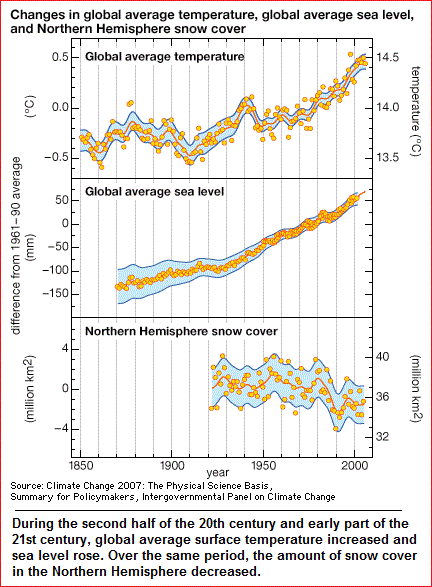
Giving voice to a growing conviction of most of the scientific community, the Intergovernmental Panel on Climate Change (IPCC) reported that the 20th century saw an increase in global average surface temperature of approximately 0.6 °C (1.1 °F). The IPCC went on to state that most of the warming observed over the second half of the 20th century could be attributed to human activities, and it predicted that by the end of the 21st century the average surface temperature would increase by another 1.8 to 4.0 °C (3.2 to 7.2 °F), depending on a range of possible scenarios. Many climate scientists agree that significant economic and ecological damage would result if global average temperatures rose by more than 2 °C [3.6 °F] in such a short time. Such damage might include increased extinction of many plant and animal species, shifts in patterns of agriculture, and rising sea levels. The IPCC reported that the global average sea level rose by some 17 cm (6.7 inches) during the 20th century, that sea levels rose faster in the second half of that century than in the first half, and that—again depending on a wide range of scenarios—the global average sea level could rise by another 18 to 59 cm (7 to 23 inches) by the end of the 21st century. Furthermore, the IPCC reported that average snow cover in the Northern Hemisphere declined by 4 percent, or 1.5 million square km (580,000 square miles), between 1920 and 2005.
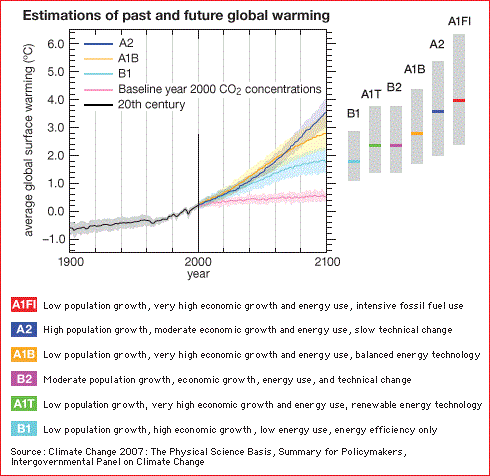
The scenarios referred to above depend mainly on future concentrations of certain trace gases, called greenhouse gases, that have been injected into the lower atmosphere in increasing amounts through the burning of fossil fuels for industry, transportation, and residential uses. Modern global warming is the result of an increase in magnitude of the so-called greenhouse effect, a warming of Earth's surface and lower atmosphere caused by the presence of water vapour, carbon dioxide, methane, and other greenhouse gases. Of all these gases, carbon dioxide is the most important, both for its role in the greenhouse effect and for its role in the human economy. It has been estimated that, at the beginning of the industrial age in the mid-18th century, carbon dioxide concentrations in the atmosphere were roughly 280 parts per million (ppm). By the end of the 20th century, carbon dioxide concentrations had reached 369 ppm (possibly the highest concentrations in at least 650,000 years), and, if fossil fuels continue to be burned at current rates, they are projected to reach 560 ppm by the mid-21st century—essentially, a doubling of carbon dioxide concentrations in 300 years. It has been calculated that an increase of this magnitude alone (that is, not accounting for possible effects of other greenhouse gases) would be responsible for adding 2 to 5 °C (3.6 to 9 °F) to the global average surface temperatures that existed at the beginning of the industrial age.
Source: "Global Warming." Encyclopædia Britannica Ultimate Reference Suite, 2013.We need a new form of government. A Cenocracy providing an enhanced philosophy-of-life perspective.
Date of Origination: Wednesday, 15-Mar-2017... 04:00 AM
Date of Initial re-Posting: Friday, 4th-May-2018... 6:54 AM